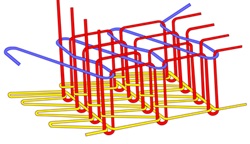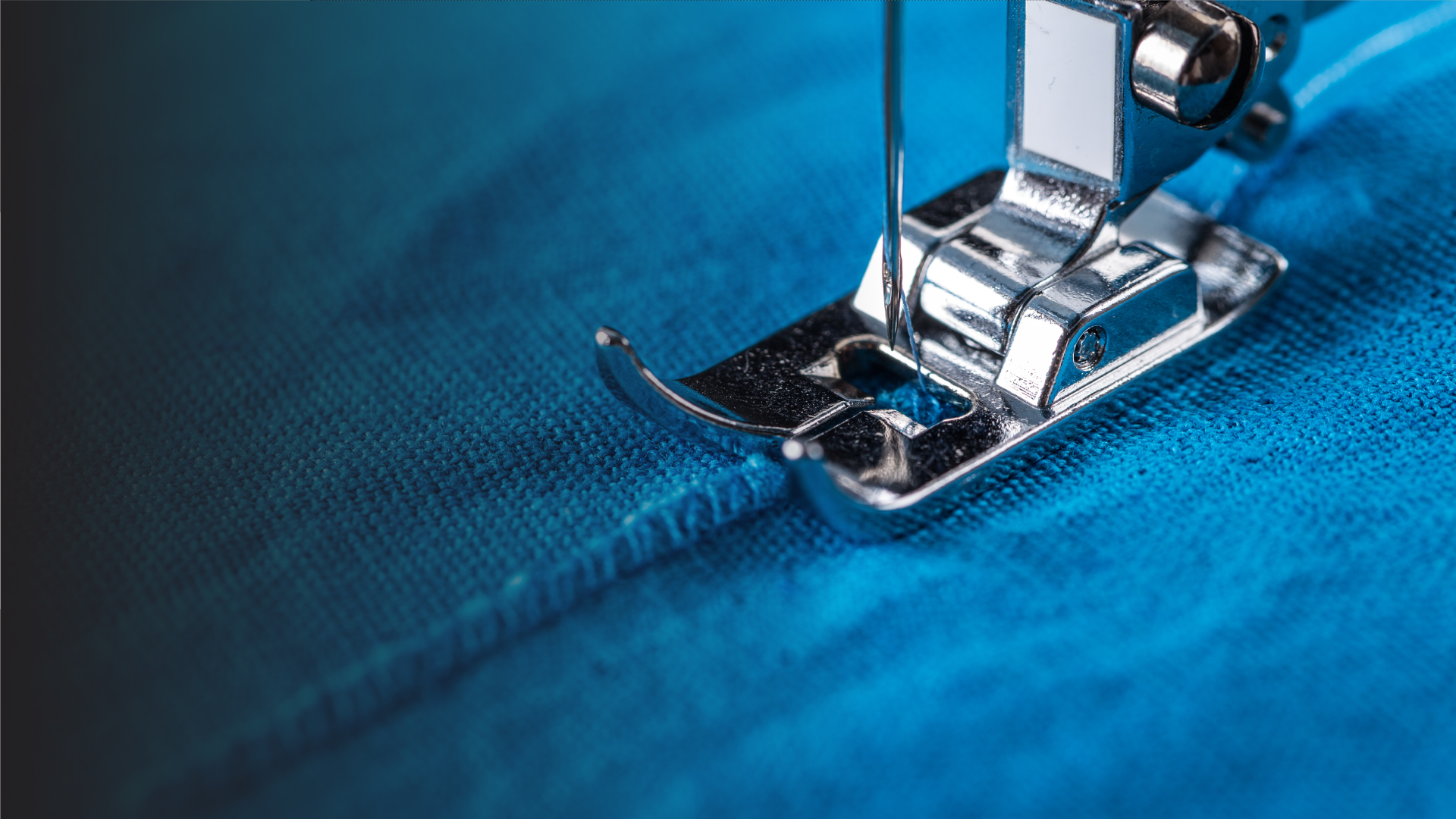
Basic Stitch Types
Contents
Introduction
Stitch Forming Devices
Steps of Stitch Formation
Stitch Types
Introduction
In this technical bulletin we will look at the application of the sewing thread and specifically stitches.
Stitch Forming Devices
The basic principle of all machine sewing depends on consistent loop formation. During sewing the needle descends through the fabric to the bottom of its stroke and as the needle rises a loop of sewing thread is formed in the scarf of the needle. This loop of sewing thread is picked up by one of two stitch forming devices namely the hook or the looper. A third stitch forming device known as a spreader is used in some stitch types to carry the sewing thread from one stitch forming device to another.
The sewing machine hook be it rotary or oscillating shuttle interlocks the needle thread with the bobbin thread. A looper, used in chainstitch formations, interloops the thread that it carries with another thread.
Steps of Stitch Formation
There are five basic steps to the formation of all stitch types. They are:
1. Penetration – the needle penetrates the fabric carrying the needle thread
2. Loop formation – a loop of sewing thread is formed in the scarf of the needle as the needle begins to rise from the bottom of its stroke
3. Conformation – this is where the threads are arranged above, below or around the material being sewn
4. Cast off – is where the needle thread loop is freed from the lower stitch forming device
5. Stitch setting – when the thread is drawn onto or into the material
Stitch Types
101 – Single Thread Chainstitch
The 101 Single thread chainstitch is formed using just one sewing thread introduced by the sewing needle. Stitch Type 101 is most often used for temporary stitching [or basting]. Its main disadvantage is its tendency to run back from the finishing end of the seam.
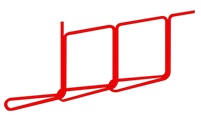
103 – Single Thread Blindhemming
A derivative of stitch type 101 is stitch type 103 known as single thread Blindstitch or Blindhemming. Again its main disadvantage is seam runback. This stitch is formed by using a curved needle which enters and exits the fabric from the same side carrying a needle thread. The needle thread interloops with a blind looper on the surface of the material. Typical applications are hemming and lapel padding operations.

301 – Lockstitch
The most common stitch type is without doubt the 301 single needle lockstitch. Its main advantage is that it looks the same on the top as it does on the bottom [it is reversible]. It produces tight, strong, low-bulk seams but its main disadvantages are low elongation and low productivity due to the need to frequently change the under thread bobbin.
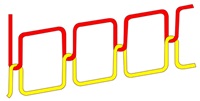
401 – Chainstitch
Higher productivity and greater seam elongation can be achieved by using a 401 single needle chainstitch. The disadvantages of using this stitch type are that it isn’t reversible and being a chainstitch it is prone to seam runback and the seams it produces tend to be bulkier than those created by a lockstitch. It is true to say that the 401 chainstitch has higher elongation than the 301 lockstitch and delivers lower seam pucker when the cause of the pucker is structural jamming.
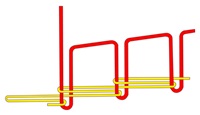
Multi needle lockstitch and chainstitch
Both 301 lockstitch and 401 chainstitch machines are available to produce multiple rows of stitching. The most common is twin needle but multiple needle chainstitch machines are readily available.
Double Needle Lockstitch
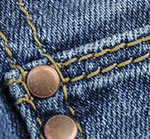
Double Needle Chainstitch
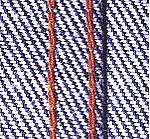
Zig Zag Stitch – Stitch types 304 and 404
Where there is a requirement for higher seam elongation with either lockstitch or chainstitch, a zig zag formation may by used. For example, in corsetry. To produce either zig zag formation the needle bar moves laterally as the material is fed. The main drawback is that the zig zag stitch formation may not deliver the desired appearance.
Zig zag stitch
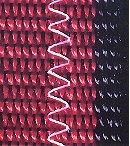
304 stitch
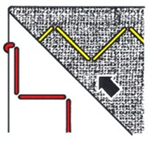
406 – Coverseam
Derivatives of the 401 chainstitch are the chainstitch coverseam stitch formations. The most common of these is the 406 twin needle coverseam. This stitch type is formed using two needle threads and one looper thread and its main uses are hemming of garments made from knitted fabric and elastic/lace attaching on underwear and lingerie.
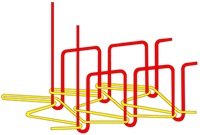
Stitch type 407 coverseam is a three needle version of this stitch type. A four needle version is available but it is not in common use.
503 – Two thread overedge (serging)
Overedge stitch formations are all contained under the 500 classification. 503 two thread overedge is the stitch type used for single ply serging and the hemming of tee shirts. This is sometimes known as welting.
Stitch type 503 is not suitable for seaming operations as it is designed to collapse and flatten when a seam is loaded laterally.
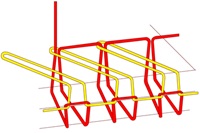
504 – Three thread overedge
This stitch type is formed with three thread; it has one needle thread and two looper threads. Stitch type 504 has excellent extension and does not unravel easily. It is generally used for serging to stop fabric fraying and for joining 2 or more plies together. These machines are capable of running at higher speeds which can aid in increased productivity.
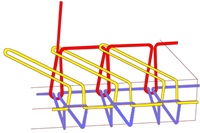
Four thread overedge
For over edge seams requiring greater seam security a four thread version of stitch type 504 is used. There are three, four thread over edge stitch types.
Stitch type 512 is known as four thread mock safety because the upper side of the stitch type resembles the upper side of stitch type 516 which is an overedge true safety stitch. Stitch type 512 is also known as four thread overedge, half cover.
The second overedge stitch type is Stitch type 514. This is known as four thread overedge, full cover. This is because the top looper extends its thread to the left hand sewing needle whereas stitch type 512 only extends its upper looper thread to the right hand sewing needle.
Stitch 512
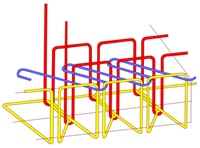
Stitch 514
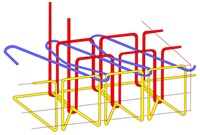
The third of these stitch types is Stitch type 515.
515 – Four thread safety stitch
This stitch type is formed simultaneously using one row of stitch type 401 and one row of 503.
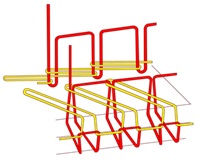
516 – Five Thread full safety
For over edge seams requiring greater seam security a four thread version of stitch type 504 is used. There are three, four thread over edge stitch types.
Stitch type 516 is another combination stitch type. This stitch type combines 401 chainstitch with 504 three thread overedge. It is known as five thread overedge full safety stitch. The 401 element bears the load while the 504 element covers the edge of the material and provides additional seam security.
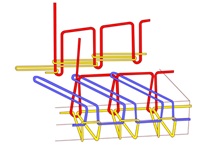
602 – Twin needle coverseam with top cover
The stitch type classifications known as 600 are basic coverseam stitch types with the addition of a top covering thread produced using a top cover or spreader device. This top cover element provides decoration and also protection where required to the upper surface of the seam.
Stitch type 602 is the same as stitch type 406 but with the addition of a top covering thread.
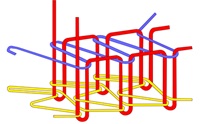
605 – Three needle coverseam with top cover
This stitch type is formed with five threads. Three needles, one looper and one cover thread. Stitch type 605 has high seam elasticity and has an higher than average thread usage. This stitch formation is flat and comfortable and is a popular choice for stretch garments. This stitch type can also be used as a decorative seam due to the top cover thread.
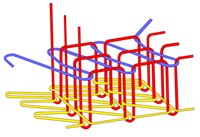
607 – Flatseam
The 606 flatlock has over the years been replaced to a large extent with stitch type 607 flatseam. This stitch type is produced using four needles, one looper, and one top covering thread.
Whilst thread consumption remains high with this stitch type it is lower than the 606 flatseam at 32 metres of thread per metre of seam. The 600 stitch type classifications have the advantage of delivering flat, comfortable seams with high seam elongation.
